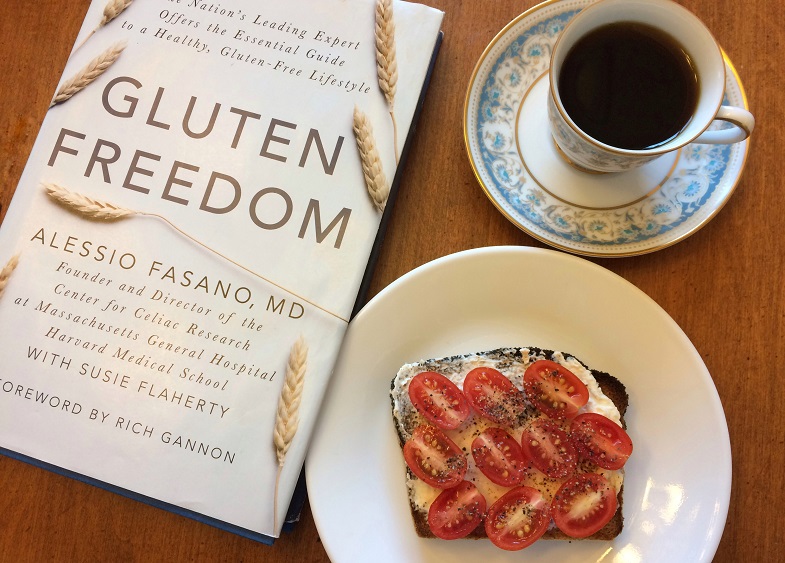Books I read when I was first diagnosed with celiac disease - Part 2
Share
The second book I purchased after finding out I had celiac disease was Alessio Fasano's Gluten Freedom.
I like facts. I need to understand how things work and why from a scientific, research point of view. This was one of the reasons I read this book. Dr Alessio Fasano MD is a world renowned expert in celiac disease and another reason for reading this book was that I had heard him speak at the Calgary Canadian Celiac Association and it was fantastic. He looks at celiac disease like a puzzle to be solved.
I recommend you read this book. I felt that finally here was a doctor who didn't dismiss celiac disease. He didn't believe his patients symptoms were in their head or caused by anxiety. He works at the Massachusetts General Hospital Center for Celiac Research. Here is a link if you want to learn more about him and the Center https://www.massgeneral.org. If you do get a chance to attend one of his talks definitely do go!
This book not only discusses celiac disease, but also touches on gluten sensitivity and wheat allergy. The book is divided into four parts.
The first part is where the science is. If you want to know about gluten and autoimmune gluten disorders this is a great read. It is written for those of us who do not have a science degree.
The section that talks about how gluten affects more that just the gut was wonderful. Many people including those in the medical profession still think that all celiacs are skinny and suffer from chronic diarrhea. If you don't fit that critera then you don't need to be tested. Dr Fasano dispells this myth. I wasn't your 'typical' celiac and had a challenging time getting diagnosised. I'm overweight and my some of my symptoms were constipation and diarrhea, tingling in hands and feet, brain fog, pain in joints and extreme fatigue and finally here was a doctor saying that these were symptoms of celiac disease and explaining the science behind it.
The second part covers what you need to know about living without gluten. He stresses the importance of getting tested before going gluten free. Disusses how overwhelming it is when you are first diagnoised and how to adjusting to your new way of life. What you can and can't eat with some great recipes interspersed throughout. Some old wives tales such as licking envelopes are dispelled and he sheds ligh on other sources of hidden gluten contamination such as Play Doh.
Part three looks at celiac disease from pregnancy through to retirement. I like this layout. You can pick and choose what chapters are relevant to you depending on what stage of life you are in. It was very interesting to read that my miscarriages and early menopause could be related to my then undiagnosied celiac disease. There is a great chapter for parents of children with celiac disease with a yummy Puppy Chow recipe on page 218. If you are a celiac going to college there is a whole chapter dedicated to that challenge. Lastly ones golden years are explored. I had never heard of the banana diet. It was interesting to learn about the "banana babies" and read Barbara Hudson's story on page 236.
In the fourth part of the book he discusses exciting new developments and treatments for celiac disease.
The end of the book has a extensive recommended reading area such as peer-reviewed articles, magazines and books to read and an appendix for cell phone useful apps. The glossary is great for all those new words I was learning and the resources area covers mainly the US but has some Canadian resources which was great.
There are some great recipes and menu ideas within the pages of this book and stories from celiacs that were relatable. I liked the book.
How about you? Did you search out scientific papers on celiac disease?
Stay tuned for my next book review.
Note: These are my personal experiences and opinions. Always seek out a medical opinion for medical concerns.
As an Amazon Associate I earn from qualifying purchases